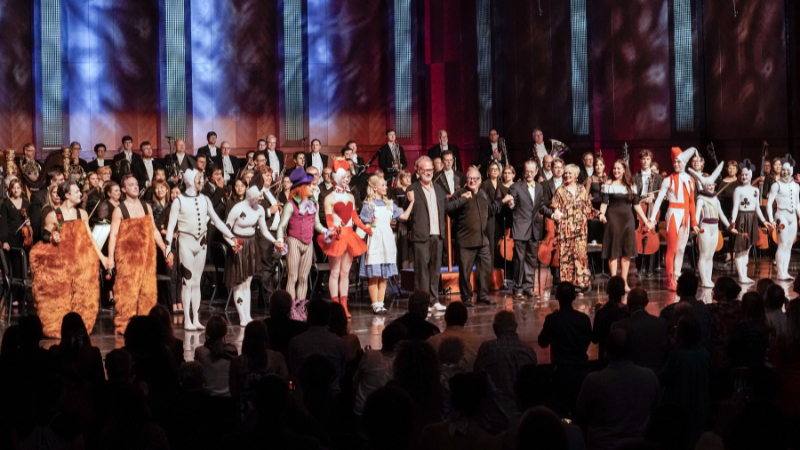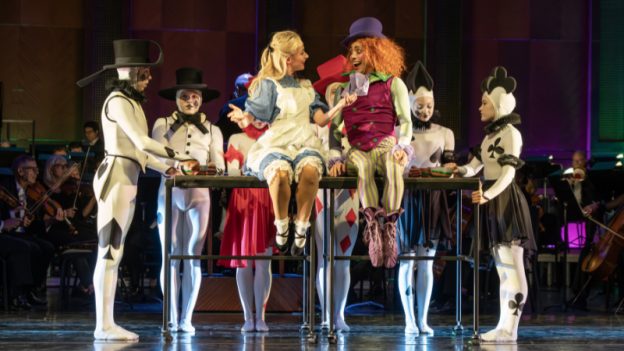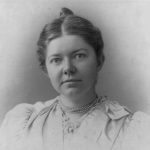September 19-21, 2025
Bass Performance Hall
Fort Worth, TX – USA
Fort Worth Symphony Orchestra, Robert Spano, conductor; Joy Bollinger, choreographer; Bruce Wood Dance Dallas.
MOZART: Symphony No. 38, “Prague”
Joby TALBOT: Suite from Alice’s Adventures in Wonderland
Gregory Sullivan Isaacs | 25 SEP 2025
Under the inspired vision of music director Robert Spano, the Fort Worth Symphony Orchestra continues to expand its already colorful musical palette. Additionally, there is ongoing outreach to other arts organizations and venues throughout the Metroplex. One highly successful example happened on September 20 when the acclaimed Bruce Wood Dance Dallas joined the orchestra for a presentation of some scenes from the ballet Alice’s Adventures in Wonderland. The creatively clever score, for a large orchestra with a greatly expanded percussion section, was written by the British composer Joby Talbot.
The three-act ballet was originally commissioned in 2011 by the British Royal Ballet, in cooperation with Covent Garden, and the National Ballet of Canada. It is of interest to the Metroplex because the ballet’s imaginative score piqued the interest of Keith Cerny, who was general director ands CEO of The Dallas Opera at that time. When seeking a composer to turn the tragic events of the 1996 attempt to reach the summit of Mount Everest into an opera, Talbot’s imaginative “Alice” score came to mind.
In his current position as president and CEO of the Fort Worth Symphony, his extensive list of collaborative performances aligns with Spano’s keen interest in community outreach. So it is not a surprise that Talbot’s ballet came to mind. In its reduction from complete ballet to a suite, the new timing made it a perfect companion for a symphonic concert.
For partners in the FWSO production, Dallas’ own contemporary ballet company, Bruce Wood Dance Dallas, was an obvious choice. The company was founded on the imaginative vision of Texas choreographer Bruce Wood (1960–2014), and is now in the hands of Joy Bollinger, the current artistic director/resident choreographer. The result was a brilliant performance that caught the attention of everyone lucky enough to see it.
Credit for this success must be divided between the technical brilliance of the dancers, Spano’s unique ability to conduct music for dancers (no small feat), and the amazingly clever costumes. The grinning Cheshire Cat, in a puppet-style costume that required two very coordinated dancers, especially wowed the audience.

Alice, asleep, and the Cheshire Cat (its eyes and grin linger), with Robert Spano and the Fort Worth Symphony Orchestra behind them. (credit: Karen Almond)

Bruce Wood Dance Dallas in a buoyant scene from Talbot’s “Alice” suite with the Fort Worth Symphony Orchestra. (credit: Karen Almond)
Another clever coup de théâtre was dressing the male dancers all in black in the pas-de-deux with Alice. It is a hat-tip to Japanese Noh Theatre, where dancers dressed in black are to be considered invisible by the audience. In traditional ballet, when the male partners perform elaborate lifts, they should also be regarded as invisible. The ballerina should appear to be weightless, as if they are flying through the air.
Spano answered the big question of how to open such a concert with a performance of Mozart’s Symphony No. 38 in D major, K. 504. It was written in 1786 for a premiere in Prague. Some musicologists claim that the work’s nickname, the “Prague” Symphony, comes from both its premiere location and Mozart’s extensive use of wind instruments, the pride of the Prague orchestra. However, some others claim that, by this time, Mozart was already expanding his use of wind instruments in his operas and piano concertos. Nevertheless, the symphony is in the standard three-movement form, as established by Haydn, but with Mozart adding a substantial slow introduction to the opening.
The aforementioned wind parts were beautifully presented in all their glory by the excellent players of the FWSO. Jake Fridkis, the principal flutist, was especially noteworthy in all of the clever counterpoint material that Mozart writes the final “Presto” movement.
Considering the difficulty of Talbot’s ballet music, it is little wonder that the Mozart symphony felt a little under-rehearsed. While the FWSO certainly has the technical chops to play it, and combined with Spano’s smooth concept, a jaunty last movement, ensemble and tempo variations occasionally suffered, but didn’t detract. ■

The entire company takes a bow at the conclusion of Talbot’s “Alice” suite. (credit: Karen Almond)
EXTERNAL LINKS:
- Fort Worth Symphony Orchestra: fwsymphony.org
- Robert Spano: robertspanomusic.com
- Bruce Wood Dance Dallas: brucewooddance.org

Read more by Gregory Sullivan Isaacs.







.png)